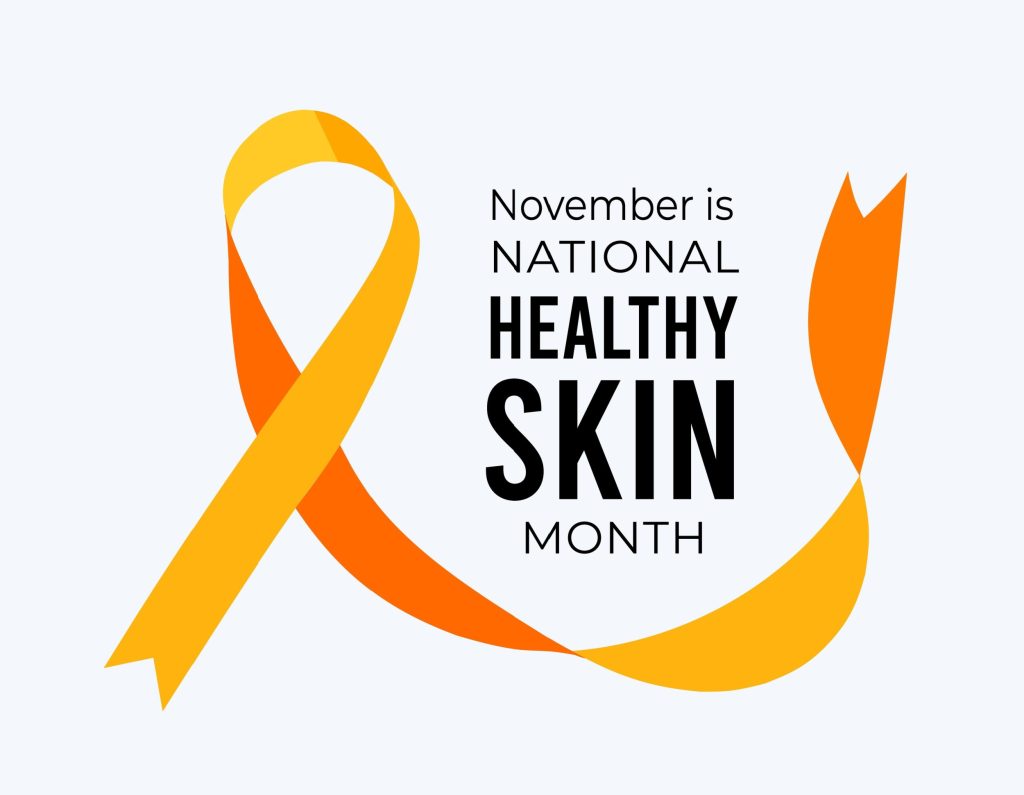
Many people think of skin cancer as the type of cancer you can always see. However, may not be the case 100% of the time. While a large portion of melanoma, basal cell carcinoma, and squamous cell carcinoma diagnoses are found on the face, arms and legs, these types of skin cancers can also be found on areas that are more hidden in nature.
Want to know where the six most unlikely places skin cancer can develop so you can be on the lookout? Keep reading for more information.
According to the American Academy of Dermatology Association, skin cancer can show up in these surprising six places:
-
Scalp
For those with dark hair, spotting skin cancer on the scalp can be challenging. Unless it causes irritation or pain, you may never know you have skin cancer unless you have your dermatologist conduct an annual skin exam. Skin cancer on the scalp may appear as a new mole or other growth and typically changes in shape and size. -
Lips
Lip cancer is often found on the lower lip, although the cancerous cells can appear on the top lip too. Generally, lip cancers are squamous cell carcinomas, so they tend to be flat and thin. Like other skin cancers, lip cancer is caused by excessive sun exposure. People who use tobacco products are at higher risk for developing lip cancer. -
Groin
Believe it or not, skin cancer can even develop in the groin/pubic area. Although this area is not usually exposed to the sun, new moles that pose a threat can grow here. If you notice a new spot or bump, you should have it checked by a licensed dermatologist right away. -
Feet
Especially in Florida, where so many of us wear flip-flops and sandals, UV exposure on the tops of the feet can lead to a skin cancer diagnosis. But did you also know that skin cancer can also develop underneath your toenails, in between your toes, and on the soles of your feet? These inconspicuous places need to be checked regularly by an expert in dermatology annually. Fast fact: Bob Marley was diagnosed with acral lentiginous melanoma, a type of skin cancer found under his toenail. This ultimately took his life. -
Hands
Your hands may be one of the most exposed places to the sun on your body. Whether you are driving, and the sun’s rays are hitting your hands on while on the steering wheel, or you are enjoying a nice day grilling outdoors, your hands are always in the sun. With factors such as frequent handwashing and forgetting to reapply sunscreen, your hands can often be left unprotected from the sun. Similar to the feet, skin cancer can also develop in between the fingers, and underneath the nails. -
Eyelids
The thin tissue surrounding the bony sockets around your eyes can be vulnerable to extreme damage from the sun’s UV rays. This includes the entire eyelid. Most skin cancer around the eyelids are basal cell carcinomas, however, melanoma, although rare, can also occur around the eyes. Exposure to the sun can cause several other issues in addition to the above, including bumps on the eyeball, macular degeneration, sunburned cornea, and dry eyes.
Regardless of skin color or ethnicity, anyone can get skin cancer. The sun’s ultraviolet rays damage the DNA in your skin cells and lead to cell mutation and formation of malignant tumors. Sometimes, sun damage underneath the top layers of skin can be a predetermining factor for developing skin cancer.
Fortunately, skin cancer is one of the most preventable forms of cancer and we can lessen our chances by taking a few important measures.
These preventable measures include:
- Regularly performing a self-exam by checking yourself in the mirror and looking for any new, unusual, or changing areas, and reporting those to your dermatologist right away.
- Receiving an annual skin exam with your dermatologist to check for the ABCDE’s of skin cancer. It’s important to have an established relationship with a dermatologist so that you can allow them to check the areas you may miss when looking at yourself.
- Applying sunscreen to all exposed areas of your skin when going outdoors. It’s important to read the label of your sunscreen to make certain it is water-resistant and broad-spectrum with an SPF of 30 or higher. If you are sweating or swimming, you’ll need to reapply every two hours.
- Wearing protective clothing like long-sleeved and lightweight pants and shirts, as well as hats and sunglasses to guarantee extra coverage.
With early identification and diagnosis, skin cancer is highly treatable. If cancerous changes are detected in the early stages, treatment has a much higher likelihood of being effective. This is the primary reason why receiving a regular skin screening with a dermatologist is an important and proactive step you can take to protect your skin and prevent cancerous growths from worsening.
For more information, or to schedule a comprehensive annual skin exam, call (855) FLD-SKIN, or visit www.fldscc.com.


